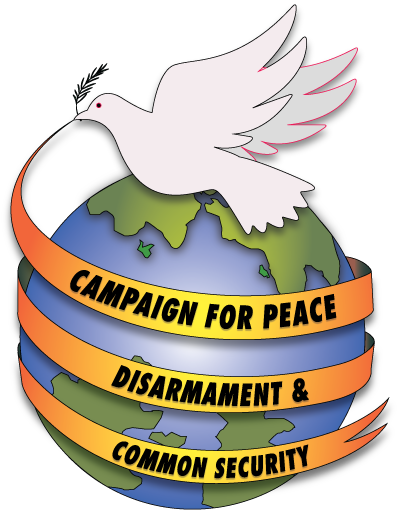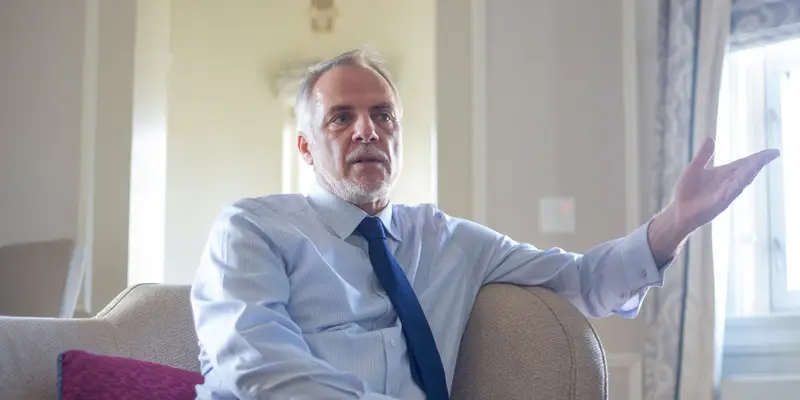by Alexander Kmentt, Director of the Disarmament, Arms Control and Non-Proliferation Department of the Austrian Foreign Ministry
Dear delegates of the Gensuikyo National Conference
I am honored to have the opportunity to speak to you through this message as you are gathering in the Marshall Islands to commemorate the 70th anniversary of the nuclear test in the Bikini Atoll in 1954. This was one of the pivotal moments in the Cold War and its uncontrolled nuclear arms race. It also inflicted devastating damage and human suffering that was inflicted on the Marshalls Islands and its inhabitants that is ongoing until today. The radioactive fall-out traveled around the globe and the Japanese fishermen onboard the Fifth Lucky Dragon who were unaware of the test and too close were affected seriously.
These tests and the terrible consequences of it are a stark reminder that there is no greater priority than to ensure that nuclear weapons are never used again under any circumstances. It is important to commemorate this event and to raise awareness and turn this into global political action for nuclear disarmament and against the ill-fated belief that nuclear weapons bring security. They are a constant source of global insecurity and an existential threat for all humanity.
Today, more than ever, is it important to argue for the prohibition and delegitimation of nuclear weapons as unacceptable and anachronistic. This becomes ever more crucial when we hear voices in many parts of the world that argue for more reliance on these weapons. This is why the Treaty on the Prohibition of nuclear weapons is so important and why it’s case is getting stronger.
Three years ago, on 22 January 2021, the Treaty on the Prohibition of Nuclear Weapons (TPNW) entered into legal force. Already at that time, nuclear dangers were considered very high. The Doomsday clock stood at 100 seconds before midnight. The 2021 statement pointed to a dark nuclear landscape against which the entry into force provided a glimmer of hope.
Since then, this landscape has only darkened further. The Doomsday clock stands at 90 seconds. Russia’s implicit but unmistakable nuclear threats and the risks of nuclear escalation of the war in Ukraine are the most pertinent and worrying development in the nuclear field. However, things have gotten worse during those two years almost wherever one looks. Tensions between the US and China are increasing, the nuclear and ballistic missile build-up in North Korea accelerates, efforts to revive the JCPOA have – so far – failed and prospects look bleak. Nuclear risks in South Asia remain high. Qualitative and quantitative nuclear arms race dynamics are at play as well as and nuclear modernization programs in practically all nuclear-armed states. Nuclear proliferation pressures are on the rise.
Nuclear rhetoric is becoming increasingly strident. United Nations Secretary General Antonio Guteres warned “(…) tensions are hitting new highs at a time when many lessons of the past seem forgotten. Today, humanity is just one misunderstanding, one miscalculation away from nuclear annihilation“.
Given these developments, one could be forgiven to conclude that any hope for nuclear disarmament and a world free of nuclear weapons is further away than ever.
One could be forgive to wonder what is the value and impact of the TPNW when all vectors seem to point in the exact opposite direction of what the ban treaty seeks to achieve?
This question can be answered with a clear yes for two main reasons.
Firstly, the TPNW is an investment by a large part of the international community into multilateralism and concrete progress on nuclear disarmament. The Nuclear Non-Proliferation Treaty (NPT) is under great duress. In this situation, the TPNW an important reinforcement of the nuclear disarmament regime.
At the First Meeting of States Parties in Vienna in June 2022, TPNW– that I had the honor to preside over – States Parties embarked on the implementation of this new treaty. They did this with considerable enthusiasm and commitment.
This positive spirit was reflected in the substantive and ambitious decisions. The key document adopted was the Vienna Action Plan, which lays out how states will implement the treaty in the coming years.
At the 2nd Meeting of states parties last December in New York, this positive energy continued. States parties reaffirmed their commitment on continue to work and implement the Vienna Action Plan.
We are working on victim assistance and environmental remediation of nuclear weapons and tests. These are the first such provisions in an international treaty that recognize the humanitarian legacy of past nuclear weapons use or tests. In several TPNW States, such as Kazakhstan and the Pacific Island states this still is a very real humanitarian issue. It is time that the Marshall Islands with its terribly experience of nuclear testing also joins the TPNW. This long-term engagement on victim assistance will be a very visible embodiment of the humanitarian rationale of the treaty.
States parties will continue to work to develop the pathways provided in the Treaty for the elimination of nuclear weapons. This becomes relevant if and when nuclear armed States are ready to join the treaty. It is crucial that TPNW States Parties work on this framework precisely at this time.
A Scientific Advisory Group was established to assist TPNW states on issues related to the implementation of the Treaty. This includes technical advice for example on disarmament verification but also on new scientific research on the humanitarian consequences and risks of nuclear weapons. It has already done some exceptional work and this engagement of the scientific community on nuclear disarmament is also crucial.
And, of course, we are working on universalization. This means bringing more states to sign and ratify the treaty. This is crucial but it is also challenging since nuclear weapons states are actively trying to undermine and pressure states not to do this. But we are making progress by convincing states with the scientific evidence on the humanitarian consequences and risks of nuclear weapons. Joining the treaty is in their own security interest. Universalisation also means more. States parties and our partners from civil society are using all opportunities to highlight the humanitarian consequences and risks and challenge the notion that nuclear deterrence can be a sustainable approach to international security. We are making the case for a paradigm shift – one conversation at that time.
I am grateful that many civil society organisations in Japan, including Gensuikyo, are doing this and I encourage you to continue and intensify to highlight these issues.
The 3rd Meeting of States Parties will take place in a little over a year from now. There is much to do.
The second key point that I want to make is the following: The TPNW is of utmost importance exactly at this very moment when nuclear risks are high and some actors seek to emphasize the relevance of nuclear weapons. The TPNW argues for and points the way out of the nuclear deterrence paradigm.
This is not based on idealism but on increasingly compelling evidence on the catastrophic and global consequences of nuclear weapons if this paradigm fails. It is also based on a higher understanding of the complex risks associated with the practice of nuclear deterrence. Since all humanity could potentially end up as collateral damage from any nuclear conflict, the TPNW represents not only legitimate concerns but also a firm and realist security assessment.
The TPNW challenges the veracity of the assumption of nuclear deterrence by highlighting that this theory is fraught with uncertainties and risks. The TPNW argues that policy decisions regarding nuclear weapons should be grounded on empirical facts of the humanitarian consequences and risks of nuclear weapons and not on an assumed nuclear deterrence stability that may be based on rather shaky evidence.
TPNW States have expressed this clearly in political declaration adopted in Vienna and reaffirmed this at the recent 2MSP “(W)e stress that any use or threat of use of nuclear weapons is a violation of international law, including the Charter of the United Nations. We condemn unequivocally any and all nuclear threats, whether they be explicit or implicit and irrespective of the circumstances.
” They went on to say that “(…) Far from preserving peace and security, nuclear weapons are used as instruments of policy, linked to coercion, intimidation and heightening of tensions. This highlights now more than ever the fallacy of nuclear deterrence doctrines, which are based and rely on the threat of the actual use of nuclear weapons and, hence, the risks of the destruction of countless lives, of societies, of nations, and of inflicting global catastrophic consequences.
The TPNW is the one international development that points to an alternative approach to the nuclear weapons issue and to security. The TPNW cannot coerce anyone to give up nuclear weapons. It can only try to convince through its arguments around the legitimacy, legality and sustainability – or lack thereof – of the nuclear status quo and the risks of continuing on the current trajectory. And it can lay the groundwork for the time when nuclear armed states are ready to engage in concrete nuclear disarmament. At the time when most vectors point in the opposite direction and any leadership on nuclear disarmament by the nuclear-armed states has all but disappeared, the TPNW is a precious and indispensable “ray – rather than glimmer – of hope” against an otherwise very bleak backdrop.
I thank you for your attention and for your commitment to nuclear disarmament.

